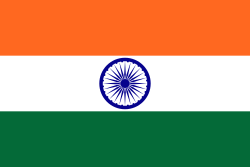7th - 9th century Hindu and Jain temples, Pattadakal monuments Karnataka 7
The Pattadakal monuments consist of nine Hindu temples and one Jain temple built near the left bank of the Malaprabha river where it turns northward towards the Himalayas, considered auspicious in ancient India. The temples are the relatively younger group of monuments, the older ones are found in Aihole and Badami less than 50 kilometer distance. The temples are important not only for their architecture and layout, but for their carvings and artist inscriptions which provide evidence of Hindu and Jaina theology, arts, culture and society between the 7th and 9th century. While the temples and artwork show signs of systematic defacement and damage, much has survived. One Hindu temple in the group of monument remains active. The Pattadakal group is one of many clusters of historic temples in Pattadakal area.
The Pattadakal temples show two major style types. The south Indian dravida vimana type is displayed in the Virupaksha, Mallikarjuna and Sangameswara temples. The north Indian rekhanagara prasada type is displayed by the Kadasiddeswara, Jambulinga, Galaganatha, Kasivisweswara and Papanatha temples. But some temples experiment a fusion of the two styles. The Sangameswara temple is the best example of dravida vimana type. The Virupaksha temple of 8th century is the best example of the fruits of creative fusion in terms of the plan, style and integration of arts.Relevantní obrázky
Relevantní články
PattadakalPattadakal, známé rovněž jako Raktapura, je indické město ve státě Karnátaka. Je známé zejména díky skupině zachovalých památek, především hinduistických chrámů, vystavěných v 8. století. Největší a asi nejznámější z chrámů je chrám Virupákša. Pro svou historickou hodnotu byly zdejší památky v roce 1987 přijaty na Seznam světového dědictví UNESCO. .. pokračovat ve čtení



